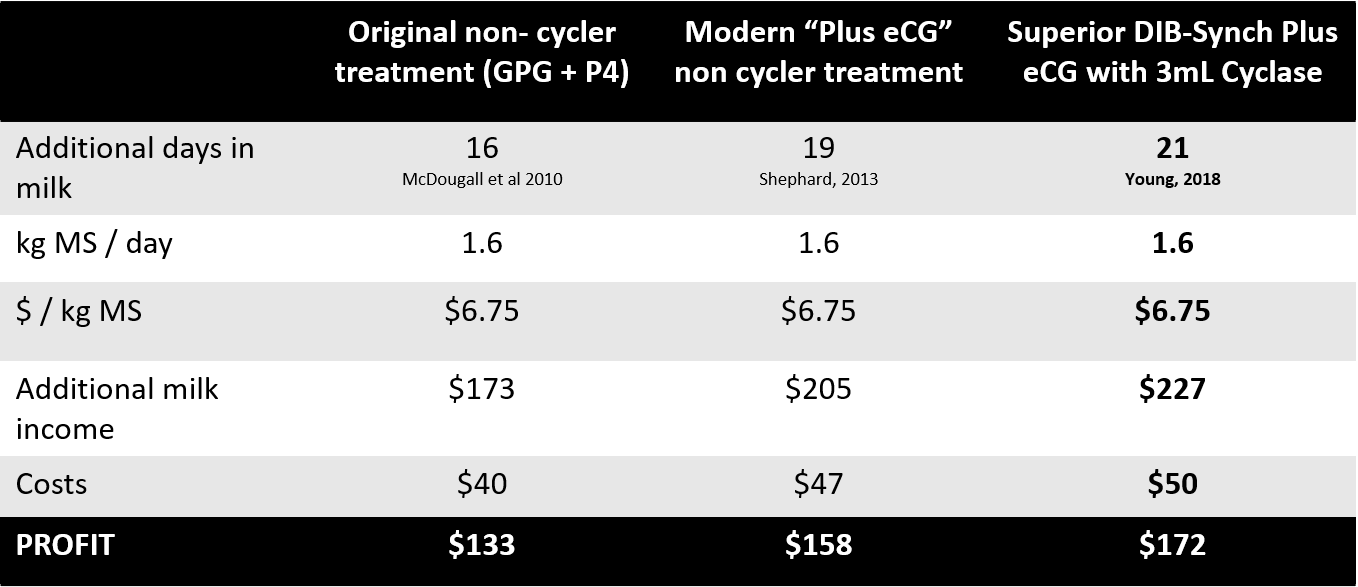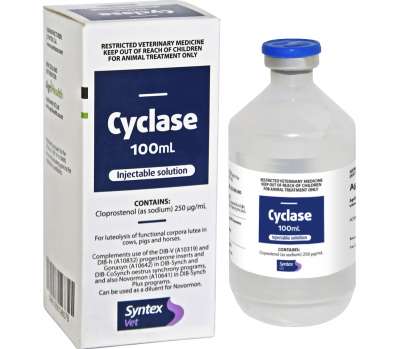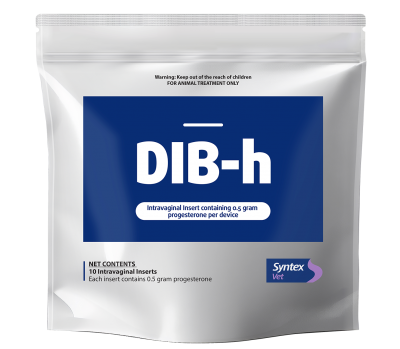DIB-Synch Plus Program

DIB-Synch Plus includes treatment with a DIB intravaginal insert for seven days combined with careful administration of other reproductive hormones. Following DIB removal cows are observed for signs of oestrus and inseminated to detected heats, with blanket insemination for remaining cows within 72 hours of DIB removal.
The advantages of treating non-cycling cows are:
• More compact calving over a short period
• Treated cows calve earlier, and have more days in milk providing higher farm income
• Fewer non-cyclers the subsequent season
• Faster genetic gain and additional AB heifer calves
Treating cows that have not been detected in oestrus ('non-cyclers') prior to the planned start of mating with DIB-Synch Plus provides an excellent return on investment of over 3:1 (refer below). Treatment of non-cyclers leads to significantly more days in milk during the subsequent season, and higher net farm income.

What is the payback for treating early?
Early treatment of non-cyclers provides the best return on investment. These cows are typically inseminated in the first days of mating. Furthermore, if not pregnant to this first insemination, their return (second) heat in the 4th week of mating will be more fertile, leading to an improved in-calf rate at four weeks.
The DIB-Synch program, a more traditional non cycling cow treatment program, is similar in all respects to DIB-Synch Plus except for the addition of Novormon in the latter program. The Novormon added 7% to the 4 week in-calf rate of NZ non-cycling cows, compared with DIB-Synch or CIDR-Synch. An NZ research study undertaken by AgriHealth demonstrated higher in-calf rates from a higher (3mL) dose of Cyclase on day 7 of the program.
The following partial budget summarises the return on investment from treating non-cycling cows prior to the start of mating:

Table 1: Return on investment compared to no treatment, per anoestrous cow treated with a DIB-Synch program, and a DIB-Synch Plus program, when treated prior to PSM.
This partial budget analysis excludes:
1. Additional income from extra AB calves
2. Feed required for the extra milk solids produced
3. Value of the reduced number of non-cycling cows the following season
The economic return for treating non-cycling cows diminishes when delayed until later in the mating period, due to fewer days in milk during the early part of next season.
References
1. Inclusion of eCG into a treatment protocol for anoestrus dairy cows, Shephard, NZVJ 2013
2. Comparing reproduction programs in NZ dairy herds, Technical Bulletin R2, 2013
3. Use of eCG in non-cycling cow reproductive programs in NZ, Technical Bulletin R5, 2013
4. Evaluation of prostaglandin dose in non-cycling cows in NZ, Technical Bulletin R14, 2018
Keywords
DIB-Synch, DIB-Synch Plus
DIB-Synch Plus Program

DIB-Synch Plus includes treatment with a DIB intravaginal insert for seven days combined with careful administration of other reproductive hormones. Following DIB removal cows are observed for signs of oestrus and inseminated to detected heats, with blanket insemination for remaining cows within 72 hours of DIB removal.
The advantages of treating non-cycling cows are:
• More compact calving over a short period
• Treated cows calve earlier, and have more days in milk providing higher farm income
• Fewer non-cyclers the subsequent season
• Faster genetic gain and additional AB heifer calves
Treating cows that have not been detected in oestrus ('non-cyclers') prior to the planned start of mating with DIB-Synch Plus provides an excellent return on investment of over 3:1 (refer below). Treatment of non-cyclers leads to significantly more days in milk during the subsequent season, and higher net farm income.

What is the payback for treating early?
Early treatment of non-cyclers provides the best return on investment. These cows are typically inseminated in the first days of mating. Furthermore, if not pregnant to this first insemination, their return (second) heat in the 4th week of mating will be more fertile, leading to an improved in-calf rate at four weeks.
The DIB-Synch program, a more traditional non cycling cow treatment program, is similar in all respects to DIB-Synch Plus except for the addition of Novormon in the latter program. The Novormon added 7% to the 4 week in-calf rate of NZ non-cycling cows, compared with DIB-Synch or CIDR-Synch. An NZ research study undertaken by AgriHealth demonstrated higher in-calf rates from a higher (3mL) dose of Cyclase on day 7 of the program.
The following partial budget summarises the return on investment from treating non-cycling cows prior to the start of mating:

Table 1: Return on investment compared to no treatment, per anoestrous cow treated with a DIB-Synch program, and a DIB-Synch Plus program, when treated prior to PSM.
This partial budget analysis excludes:
1. Additional income from extra AB calves
2. Feed required for the extra milk solids produced
3. Value of the reduced number of non-cycling cows the following season
The economic return for treating non-cycling cows diminishes when delayed until later in the mating period, due to fewer days in milk during the early part of next season.
References
1. Inclusion of eCG into a treatment protocol for anoestrus dairy cows, Shephard, NZVJ 2013
2. Comparing reproduction programs in NZ dairy herds, Technical Bulletin R2, 2013
3. Use of eCG in non-cycling cow reproductive programs in NZ, Technical Bulletin R5, 2013
4. Evaluation of prostaglandin dose in non-cycling cows in NZ, Technical Bulletin R14, 2018
Keywords
DIB-Synch, DIB-Synch Plus
Cyclase (PG) Injection

DIB-h progesterone insert

DIB-V progesterone insert

Gonasyn (GnRH) Injection

Novormon Injection

PregBoost 500 cow pack

PregBoost Plus 500 cow pack
